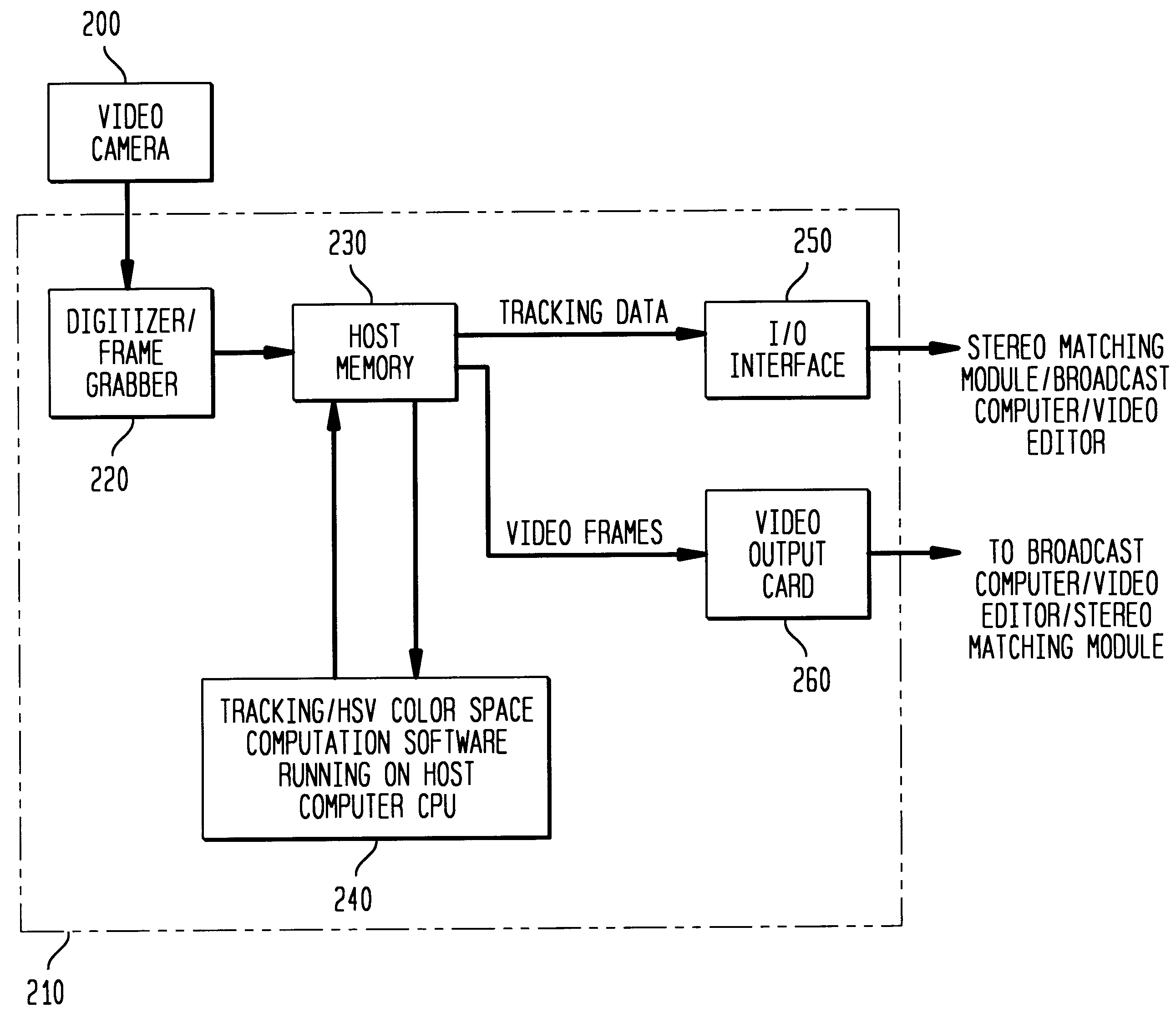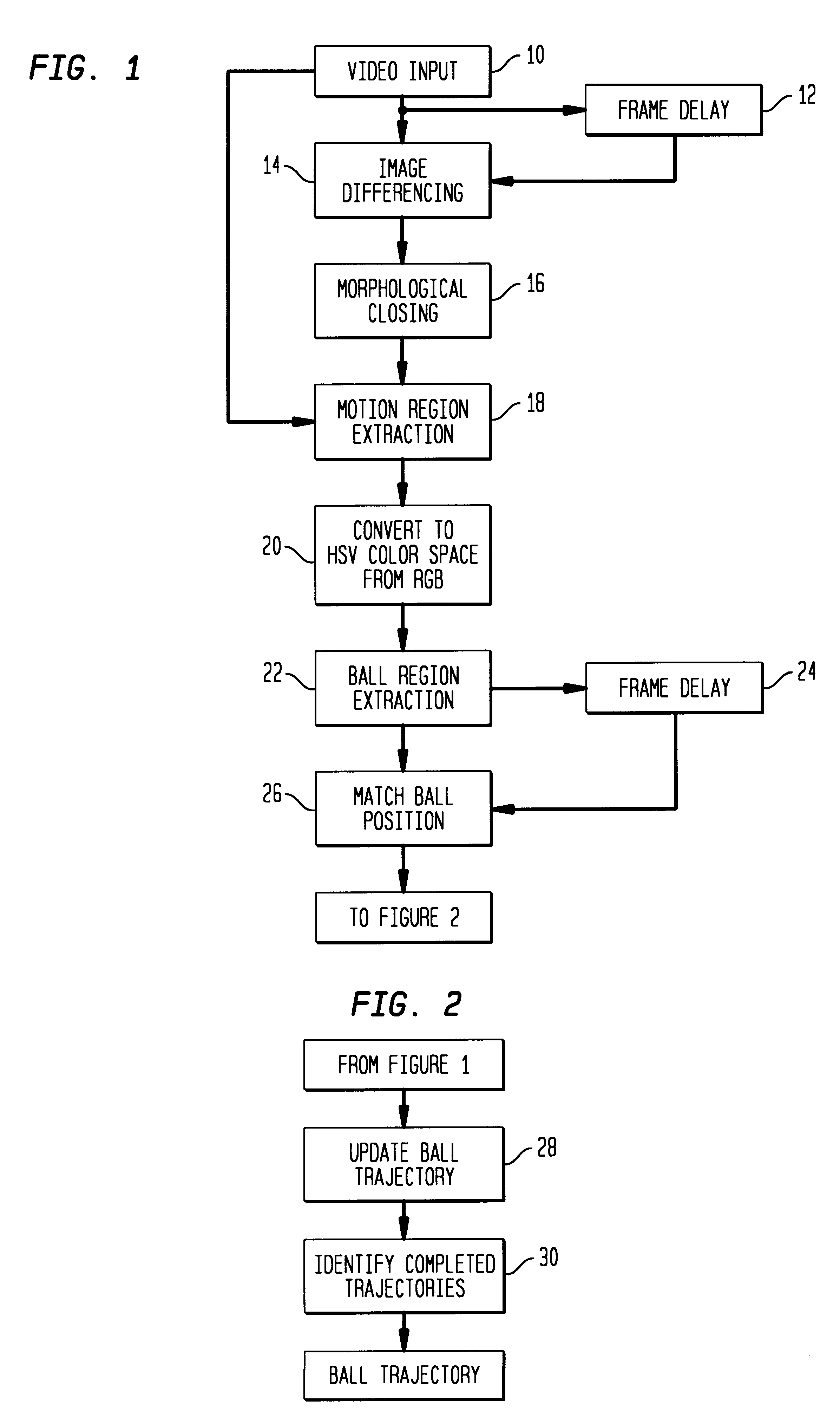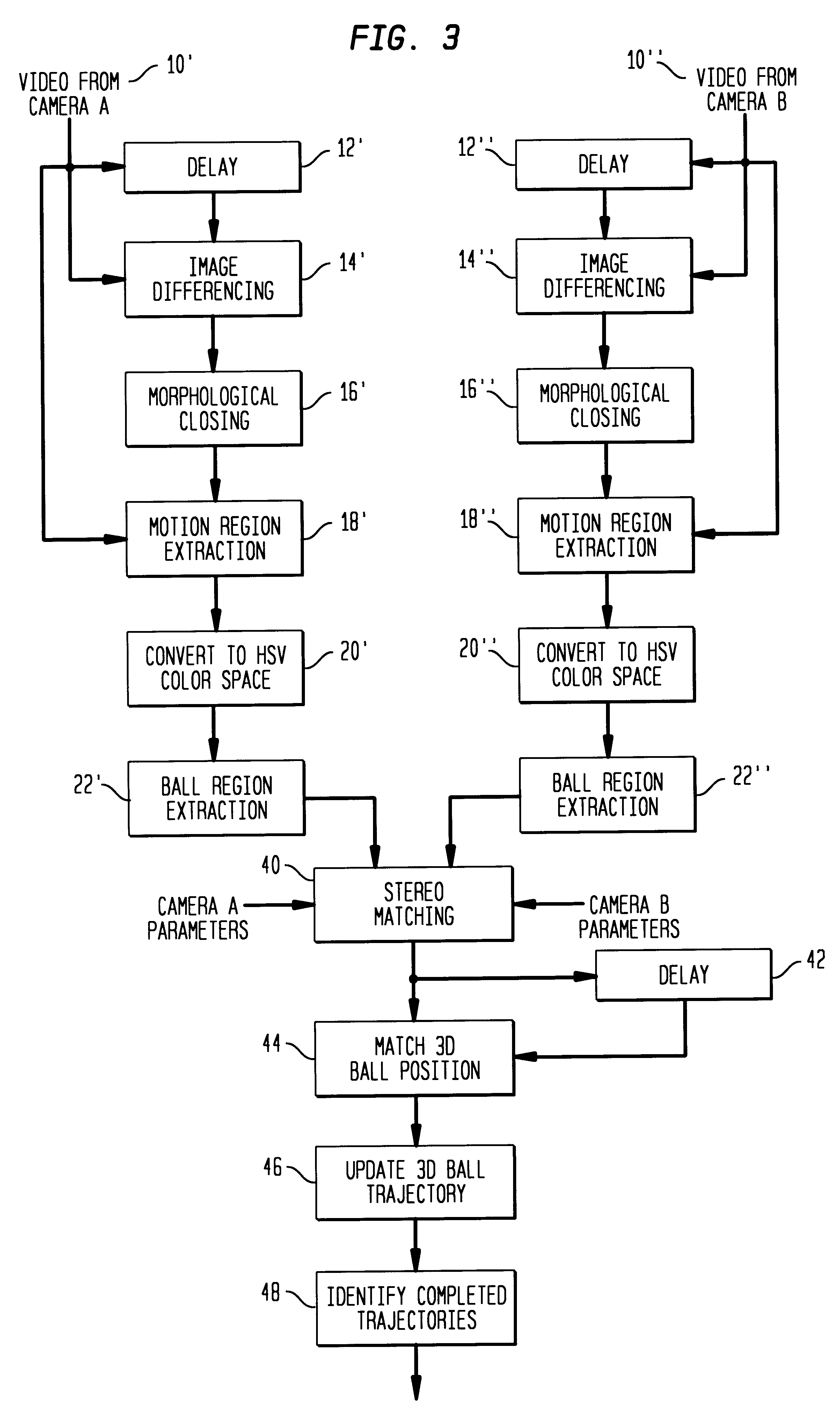Method and apparatus for tracking position of a ball in real time
- Summary
- Abstract
- Description
- Claims
- Application Information
AI Technical Summary
Problems solved by technology
Method used
Image
Examples
Embodiment Construction
The present invention will now be described in detail with reference to FIGS. 1 and 2, which collectively illustrate a basic method for tracking, by way of example, a tennis ball according to the present invention.
As seen in FIGS. 1 and 2, a video input is passed through a frame delay 12 in order to provide a current and previous frame, which are differenced (and preferably also thresholded) in step 14. Differencing and thresholding in this manner is particularly desirable as it is a fast operation which works across a variety of lighting conditions.
The video input 10 is either already in digital form using a digital video camera, or is an analog input passed through a conventional digitizer (not shown).
The result of the image differencing step 14 is a binary image. Small gaps or other discontinuities in the binary image may be closed using a conventional morphological closing operation, comprising dilation and erosion steps, as is conventional (see, for example, Giardina et al., "M...
PUM
 Login to View More
Login to View More Abstract
Description
Claims
Application Information
 Login to View More
Login to View More - R&D
- Intellectual Property
- Life Sciences
- Materials
- Tech Scout
- Unparalleled Data Quality
- Higher Quality Content
- 60% Fewer Hallucinations
Browse by: Latest US Patents, China's latest patents, Technical Efficacy Thesaurus, Application Domain, Technology Topic, Popular Technical Reports.
© 2025 PatSnap. All rights reserved.Legal|Privacy policy|Modern Slavery Act Transparency Statement|Sitemap|About US| Contact US: help@patsnap.com



